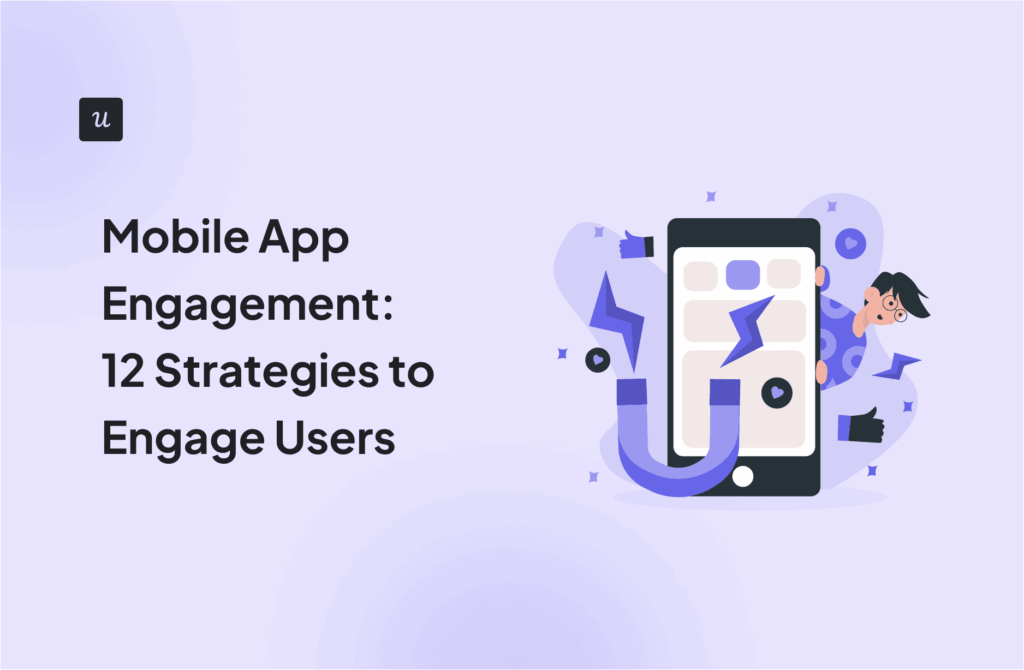![In-App Events: What Are They and How to Set Up [+ Examples] cover](https://blog-static.userpilot.com/blog/wp-content/uploads/2024/02/in-app-events-what-are-they-and-how-to-set-up_f861a7d7dc0df685b3fee6902117a951_2000.png)
In-app events give you valuable insights into user behavior. By analyzing these events in your product, you can understand how users engage with your app and make improvements to enhance the user experience.
Let’s dig into what in-app events are and how you can leverage them to drive engagement and build better products!
Try Userpilot Now
See Why 1,000+ Teams Choose Userpilot

What are in-app events?
In-app events are actions users take inside your products. They may include activities such as signing up, logging in, making a purchase, or engaging with a feature.
Collecting and analyzing in-app events help you understand the overall behavior of your users – which is crucial for building better products.
Why should you track in-app events?
In-app event tracking is essential because it helps you understand how people interact with your app.
This understanding can guide you in refining your app to better meet customer needs. Here’s why you should keep an eye on these events:
- Understand how users engage with your product: You can see what new features or content your users prefer by tracking which in-app events are popular, such as app opens.
- Make decisions to enhance user experience: Insights from in-app events tracking allow you to tailor your app’s functionality and page design. This will make it more enjoyable and intuitive for your users.
- Access the impact of your product strategies: Observing how in-app event participation changes over time helps you evaluate the success of your product improvements, campaigns, or changes. Doing so ensures your strategies align with customer preferences.
How to track in-app events?
In-app event tracking involves monitoring details within your app to gather insights into their behavior and preferences. This process helps optimize the app experience and improve engagement.
Determine your tracking goals
Before diving into the tracking specifics, setting goals is crucial. Understanding your tracking goals helps pinpoint exactly which in-app events are worth monitoring.
For example, if you aim to track conversions from trial to paid users, you’ll focus on in-app events where users click to complete payment. This targeted approach ensures you gather meaningful data directly linked to your app’s success metrics.

Use an analytics tool to collect event data
Choosing the right analytics tool is a game-changer for effective in-app event tracking. Look for a tool that supports in-app event tracking and allows you to define each event name.
This setup will enable the tool to automatically capture data whenever a user engages with a predefined event in your app.
For example, Userpilot lets you tag features without needing to write code, making it easy to track feature engagement.
Alternatively, you can use tracked events to gather server-side data such as email confirmations, subscriptions, etc., offering a deeper dive into customer interactions.

Visualize in-app event data for actionable insights
To transform raw data into actionable insights, it’s essential to visualize your in-app event data. Using an analytics tool that offers a variety of chart options can help you better understand user behavior and engagement patterns.
For example, using Trends in Userpilot, you can utilize collected in-app events to compare customer engagement across different features.

Examples of tracking in-app events for SaaS
In-app event tracking can reveal valuable insights about user behavior and product performance. Here are some examples of how SaaS companies can effectively monitor in-app activities to drive growth and improve customer satisfaction.
Tutorial completion (Onboarding engagement)
Monitoring tutorial completion involves tracking in-app events that indicate how current users interact with your app’s onboarding process.
By analyzing events, such as how many users click on tooltips or complete the onboarding checklist in the app, you can gauge the effectiveness of your onboarding guidance.
This insight helps understand the impact of your onboarding on driving customer engagement, allowing you to refine and improve the initial experience for better user retention and satisfaction in your app.

Core feature engagement
Identifying and tagging the core features of your product is crucial for in-app event tracking. They can show how users interact with them through in-app events.
By monitoring which functionalities are most popular or where users might face challenges in your app, you can assess the need for additional guidance or feature discovery mechanisms, like tooltips, tailored to enhance in-app event tracking.
This process helps recognize friction points in your app for improvement. It ensures that users fully leverage your app’s potential, enhancing overall engagement and satisfaction with a focus on in-app events.

In-app purchases
For SaaS platforms, in-app purchases often include transitions from trial to paid subscriptions or account expansions. Tracking these in-app events is vital to assess the effectiveness of your growth strategies.
For example, Userpilot can help you leverage these in-app events in the Path report to understand how users navigate your app toward conversion.
This app feature, expected to be released at the end of March 2024, will provide deep insights into the user journey within the app. It will help you refine the pathways that lead to revenue-generating actions.

Conclusion
Implementing in-app events can significantly enhance your product. Improving aspects such as your tutorial completion through in-app events can lead more users to activation. It can also guide them to your app’s Aha! moment faster, and turn them into long-term users.
Without the insights provided by in-app events, it’s impossible to know what to improve or where to optimize your app’s customer experience.
Want to get started with in-app event tracking? Get a Userpilot Demo and see how Userpilot can provide you with the tools to analyze your in-app events and offer ways to improve them so your users stay loyal for longer.





